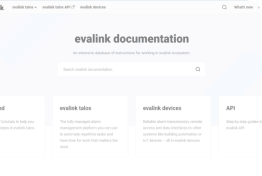
- Smart Alarm Management
Revolutionizing security operation centres: 3 ways automation is changing the game
In today's digital age, the role of security operators has never been more critical. Whether monitoring surveillance cameras, managing access control systems, or responding to alarms, their tasks are multifaceted and often require quick, precise decision-making. However, the landscape of security operations is rapidly evolving, thanks to automation. In this blog, we'll delve into three significant ways automation is changing the way security operators work:
- Enhanced surveillance and less manual tasks
- Unified processes
- Efficient alarm handling and incident response
Automation's benefits make operators’ jobs more efficient and effective than ever 🦾
Enhanced surveillance and focus on incidents
Imagine a security system that never sleeps, tirelessly watching over your premises and instantly identifying potential threats. Automation in surveillance and threat detection is revolutionizing the security industry. Traditionally, security operators had the arduous task of manually monitoring many surveillance cameras, which is not only resource-intensive but also prone to human error. Conversely, automation leverages the power of artificial intelligence (AI) and machine learning to analyze video feeds in real-time.
AI algorithms can detect anomalies, such as unauthorized access, unusual behavior, or even abandoned objects, with remarkable accuracy. When such abnormalities are detected, the system alerts the security operator immediately, enabling a rapid response. AI event analysis uses a variety of strategies to reduce response time, including the following: data mining on security incidents; assigning risk scores; clustering for commonalities; differentiating and prioritizing distinct classes of risks; triaging notifications to human analysts; recommending reaction or remediation measures; and automating containment tasks are all examples of containment activities. Additionally, automation can go beyond simple anomaly detection by analyzing human behavior. For instance, it can flag individuals loitering in restricted areas or moving erratically, helping operators focus on potential threats rather than sifting through hours of footage.

Standardized processes
In the ever-evolving physical security landscape, Security Operations Centers (SOCs) play a pivotal role in safeguarding organizations against threats. SOC personnel face a constant barrage of alarms and incidents, demanding quick and precise responses. Automation is becoming increasingly indispensable in this domain as it streamlines operations and enforces standardized processes, offering a robust solution to the challenges faced by security professionals.
One of the primary advantages of automation in SOCs is its ability to enforce standardized procedures for consistency in handling alarms. Regardless of the alarm's source or location, automation ensures that each alert is treated uniformly, following predefined protocols. This consistency prevents errors or oversights during alarm response, especially in high-stakes situations.
Automation doesn't tire, and it doesn't forget. It consistently follows the established playbook for incident response. This means the same systematic, well-thought-out response, whether a low-level alert or a potentially critical breach, is triggered. This minimizes the risk of human error and ensures that every incident is addressed promptly and efficiently.
The benefits of standardized processes facilitated by automation extend beyond incident response and simplifying training and onboarding. They also significantly streamline the training and onboarding of new SOC personnel. When procedures are consistent and automated, new team members find it easier to grasp how to handle alarms effectively. The learning curve is reduced, and everyone can quickly align with best practices.
Imagine a new team member joining the SOC. Thanks to automation, they are presented with a well-structured, automated system that guides them through each step of incident response. They can learn by doing, following the established protocols without missing crucial details. This accelerates their proficiency and ensures that they adhere to the SOC's established security standards from day one.
Automation becomes a force multiplier for SOCs, allowing them to achieve more with their existing resources. It empowers security analysts to focus on critical tasks that require human intervention, such as making complex decisions and adapting to new threats. In contrast, routine and repetitive tasks are automated to perfection.

Efficient alarm handling and incident response
False alarms have long been a bane for security operators, diverting their attention from genuine threats and wasting valuable time. As mentioned, automation changes the game by reducing false alarms and enhancing incident response.
This can be achieved through alarm verification, where automated systems verify alarms using multiple sensors. For instance, a motion sensor and a video camera can confirm whether an alarm is genuine or a false positive. This reduces the number of false alarms that operators must investigate. Automation also plays a crucial role in incident escalation. Automation can trigger a predefined response protocol in a confirmed alarm, including examining and interpreting threat intelligence sources, updating tickets, sending email alerts, investigating incidents involving log collection and analysis, and resolving alerts. Moreover, automation goes hand in hand with resource optimization. It helps organizations make the most efficient use of their resources by reducing false alarms, automating routine tasks, and providing predictive maintenance capabilities. This allows staff to focus on more complex and value-added tasks, saving time and money while maximizing the effectiveness of alarm management teams.
Conclusion
The role of security operators is evolving alongside technological advancements in automation. These three significant changes—enhanced surveillance and threat detection, unified processes via cloud centralization, and efficient alarm handling—showcase how automation simplifies their tasks and elevates the overall security posture. As technology advances, we can expect security operations to become even more efficient, effective, and responsive to emerging threats. These technologies equip operators with the tools to stay ahead of evolving threats, streamline data management, and enhance collaboration.
You may build your ecosystem with our fully managed alarm platform, customizable automation tools, and several connectors from industry-leading vendors. SOC operators will rely on these innovations as security challenges evolve to maintain the security and integrity of their organization's digital assets. By embracing automation, security operators are safeguarding physical assets and unlocking new dimensions of security that were once unimaginable. Embracing cloud centralization and automation is not just a choice; it's a necessity for modern security operations. The future of security operations is automated, and it's a future that promises enhanced safety and peace of mind for us all.
If you want to manage alerts more effectively, reduce manual labor, automate activities, filter false alarms more quickly, and integrate a wide range of systems with extraordinary modularity and scalability for your alarm monitoring center, check out evalink and schedule a demo with us today.
Ready to take your security business to the next level? Request a demo



